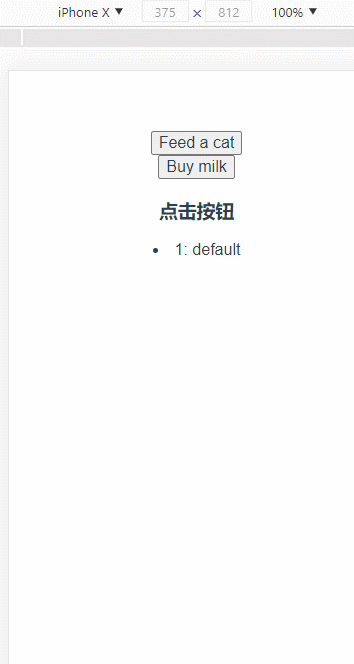Vue3使用插槽时的父子组件传值
用法见官方文档深入组件章节,插槽部分:
参考文档:插槽-作用域插槽-插槽prop
作用域插槽
有时让插槽内容能够访问子组件中才有的数据是很有用的。
需求:插槽内容能够访问子组件中才有的数据
实现
子组件
TodoList.vue
<template>
<div v-for="(todoItem, index) in state.todoList">
<slot :item="todoItem" :index="index"></slot>
</div>
</template>
<script setup>
import { reactive } from '@vue/reactivity'
const state = reactive({
todoList: ['Feed a cat', 'Buy milk']
})
</script>
<style lang="less">
</style>
-
在子组件插槽上定义需要传递的属性,如上代码中的
item和index; -
子组件将子组件中定义的数据通过插槽属性传递给父组件;
父组件
useSlot.vue
<template>
<div>
<todo-list>
<template v-slot:default="slotProps">
<button @click="handleClick(slotProps)">{{slotProps.item}}</button>
</template>
</todo-list>
<div>
<h3>点击按钮</h3>
<li>{{`${state.slotProps.index + 1}: ${state.slotProps.item}`}}</li>
</div>
</div>
</template>
<script setup>
import { reactive } from '@vue/reactivity'
import TodoList from './TodoList.vue'
const state = reactive({
slotProps: {
index: 0,
item: 'default'
}
})
const handleClick = (slotProps) => {
state.slotProps = slotProps
}
</script>
<style lang="less">
</style>
-
父组件中定义插槽属性名字slotProps
默认插槽 <template v-slot:default="slotProps"> ... 当使用具名插槽时 <template v-slot:other="slotProps"> ... -
属性slotProps获取子组件传递过来的插槽属性
注意:
- 属性只能在插槽内部才能获取
- 具名插槽写法
演示
